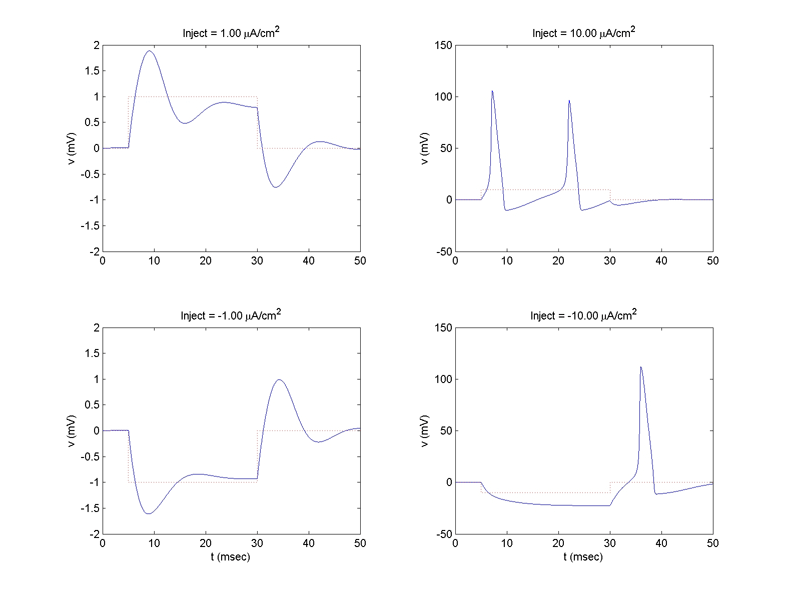2. Now we're going to simulate the response of the squid giant axon to a step current injection. The HH model for the squid giant axon is described by the following set of equations:

with the following parameter values:

Use the six subroutines from HW #3.1 above when evaluating the rate constants. Initialize the HH state variables at v=Vrest before starting the main simulation loop. Use Euler integration with an integration time step of 0.025 msec (Note: deltaT is a factor of 40 smaller than we used in our integrate-and-fire simulations in HW #2. This is necessary for numerical stability - more on this topic in the next homework assignment.) The structure of your simulation code should be something like the following:
initialize v to Vrest.
initialize m, n, & h to their steady-state values at Vrest.
LOOP:
compute injection current for this time step.
get values of v, m, n, & h from previous time step.
use these values to compute gNa, gK, dm/dt, dn/dt,
dh/dt, and dv/dt according to the ODEs given above.
update m, n, h, and v using the Euler method.
END LOOP
generate plots

 HOMEWORK home page
HOMEWORK home page